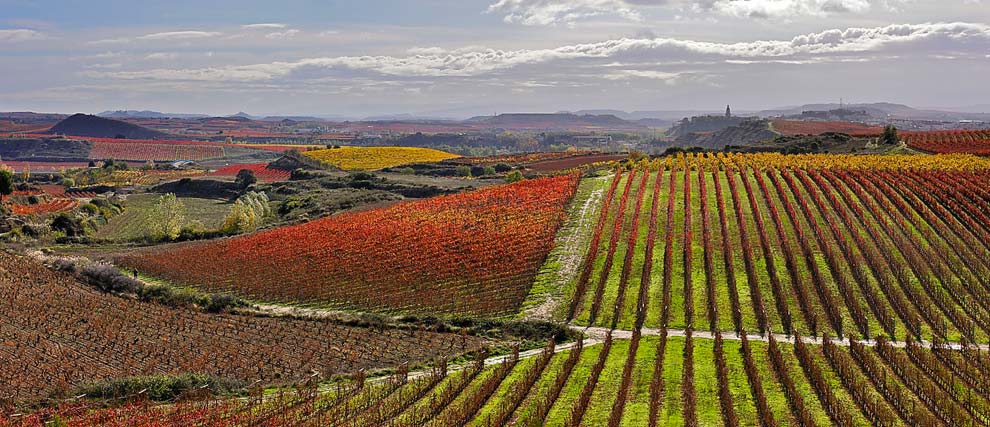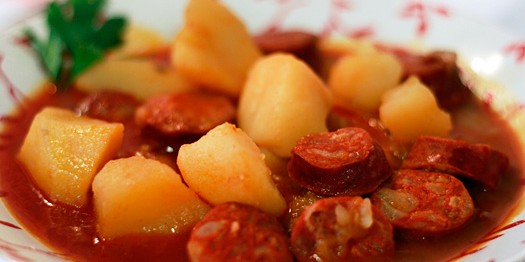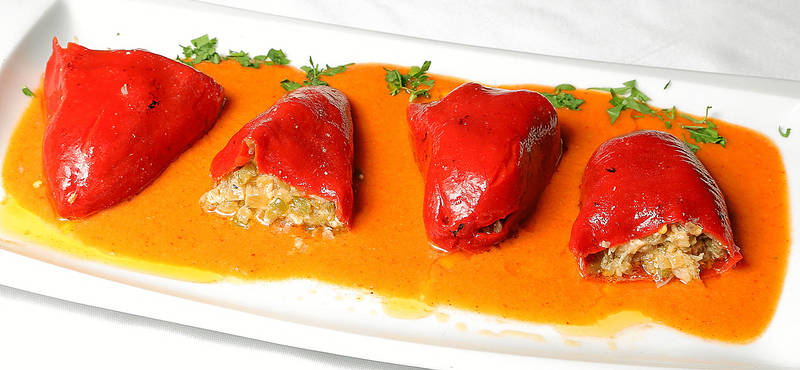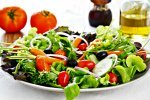La Rioja, A Culinary Mix
La Rioja is situated on the Camino de Santiago route. It is a land of travelers and exchange, where relationships are formed and culture and customs interchanged. All this is reflected in its gastronomy which, apart from providing the traveler with the opportunity to taste top quality wines, has also been very much influenced by its neighboring regions, adapting the dishes with that touch of exquisite simplicity so typical from this area.
La Rioja cuisine is simple and uses the top quality products found in the region. The popular agricultural tradition of the area provides the cuisine with a great variety of local vegetables and pulses: peppers, garlic, onions, artichokes, asparagus, lettuce, chard, borage...
What visitor to La Rioja can resist tasting its great stews, made with fava beans or "caparrón" beans? These dishes are unique and use beans which have not been completely dried. As a result, the beans keep their natural flavor and absorb the flavor of the quail or spicy sausage with which they are cooked.
The pig, a symbol of Christian culture, has always lived side by side with the people of La Rioja, either as wild or as farm animals. The Muslim presence in mainland Spain has left its mark on this region, the Riojans having a great taste for lamb. Both types of meat are extremely popular, although the fish dishes put up a fierce competition. These are prepared using bonito, cod, hake, red bream and mackerel. Sweet black pudding and Riojan chorizo are just a couple of examples of the produce prepared in the mountains.
Land of "GOLMAJERIA"
This small Autonomous Region has influenced the rest of Spain. With the River Ebro acting as the main transmission channel, its delectable green sauce and "salsa fritada", which accompanies fried dishes, have earned popularity throughout the country and been incorporated into other national dishes.
The Riojan-style potatoes, prepared with chorizo and at times spare ribs, have been the point of admiration of many gourmets, including Bocusse. Its lamb chops are a vital component of the suppers held in bodegas and companies and are ever-present in restaurants, where they are roasted on an open fire which gives them that special taste.
Patatas a la Riojana: When the acclaimed French chef Paul Bocuse was asked to prepare a banquet for the hundredth anniversary of a famous winery in La Rioja, he shared this dish with the kitchen staff and apparently requested a second and then third serving for himself!
Although La Rioja has no coastline, traditional fish dishes abound. Worth special mention are the Rioja-style cod, cooked with tomatoes and peppers, and the red bream in sauce, which is a typical dish served on Christmas Eve; the delectable river crab with fried fish, bonito and the famous hake in green sauce.
The locals of La Rioja have always known how to make the most of the produce that nature has given them. They are experts in giving it that "special touch" which makes their dishes that little bit different: trout, crab, snails and wild mushrooms are carefully combined with other ingredients resulting in many dishes which have come to be considered delicacies.
Pimientos del piquillo rellenos (Stuffed piquillo peppers): Vegetables don't care about borders, and even if piquillo peppers are considered a Navarran specialty, neighbors next door in La Rioja claim some rights over the celebrated peppers. Here, they are stuffed in the manner of Logroño, the capital of the region and a good starting point for visiting a number of excellent nearby wine cellars.
Rioja Wines
The quality of the wine is what has made La Rioja a household name. Its Denomination of Origin, famous world-wide, includes white and rosé wines but it is the excellent red wines which are most appreciated. These are aged in barrels called "barricas" to produce "crianzas" (matured for at least two years) and "reservas" (matured for at least three years) which, whether they are from Rioja Alta, Alavesa or Rioja Baja, obtain magnificent levels of quality.





